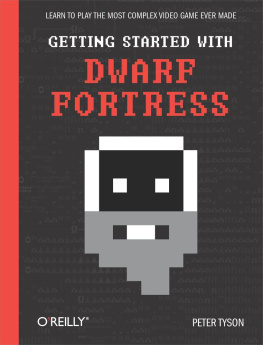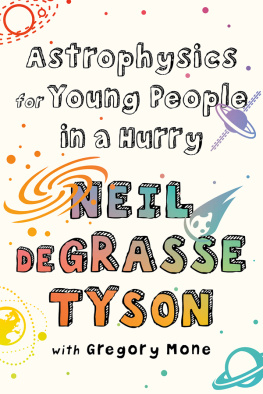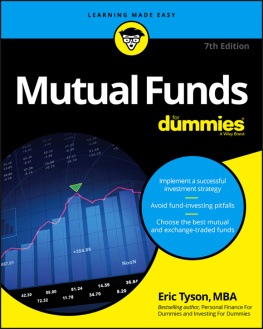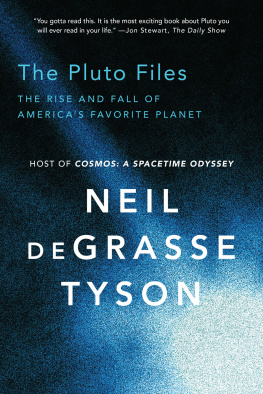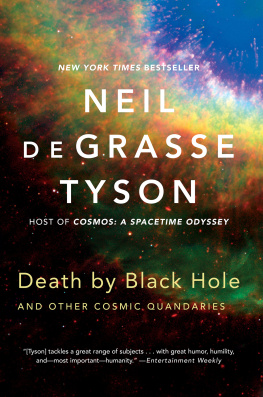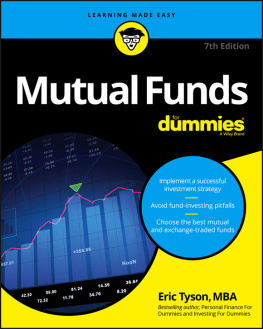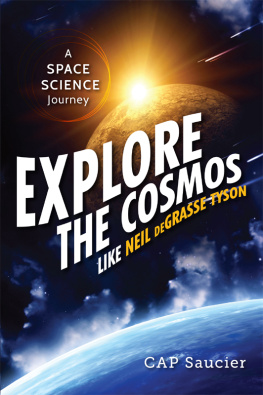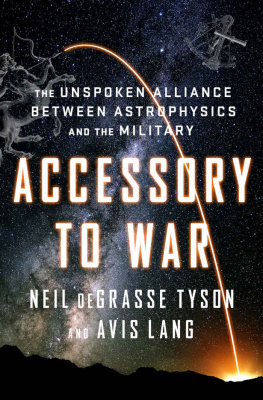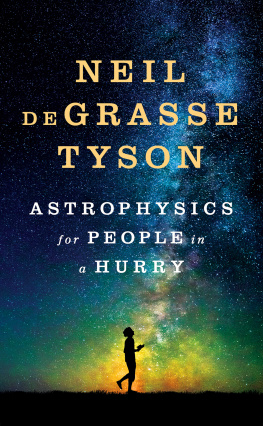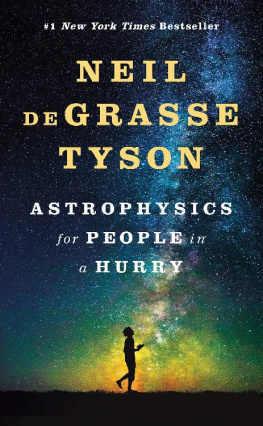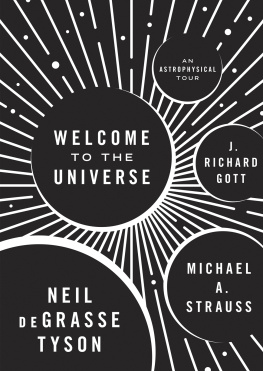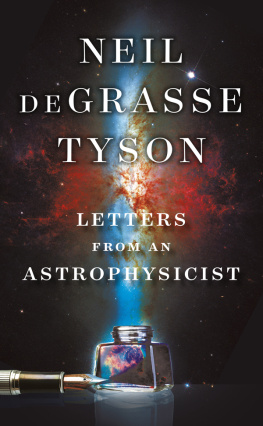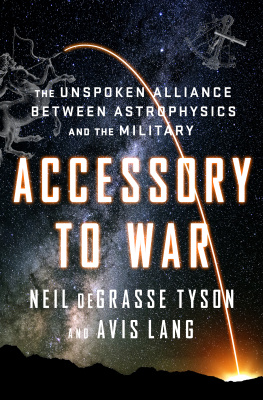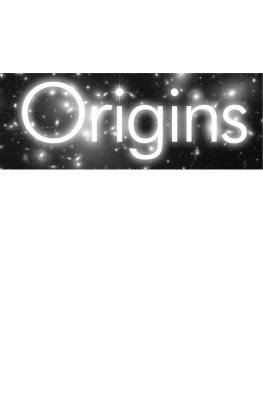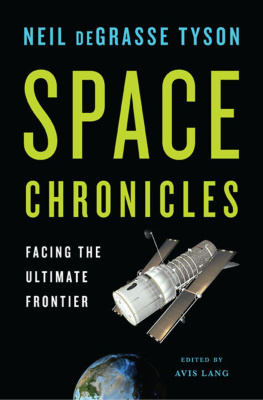Contents
Guide

S ELECTED O THER T ITLES BY N EIL D E G RASSE T YSON

Accessory to War: The Unspoken Alliance Between Astrophysics and the Military (2018)
With Avis Lang
Astrophysics for People in a Hurry (2017)
StarTalk: The Book (2016)
With Charles Liu and Jeffrey Lee Simons
Welcome to the Universe: An Astrophysical Tour (2016)
With Michael A. Strauss and J. Richard Gott III
The Inexplicable Universe (2012)
A six-part video lecture series
Space Chronicles: Facing the Ultimate Frontier (2012)
Edited by Avis Lang
The Pluto Files: The Rise and Fall of Americas Favorite Planet (2009)
Death by Black Hole: And Other Cosmic Quandaries (2007)
Origins:
Fourteen Billion Years of Cosmic Evolution (2004)
With Donald Goldsmith
Letters
from an
Astrophysicist

N EIL D E G RASSE T YSON

Copyright 2019 by Neil deGrasse Tyson
Epigraph: 1704 March/April, Philosophical Transactions of the Royal Society of London, A Letter to Dr. Edward Tyson from William Cowper, page 1586. Printed for S. Smith and B. Walford, Printers to the Royal Society, London.
Photo of Comet Schwassmann-Wachmann 3 on : NASA/JPL-Caltech, W. Reach (SSC/Caltech).
Photo of the Helix Nebula on : NASA, WIYN, NOAO, ESA, Hubble Helix Nebula Team, M. Meixner (STScI), and T. A. Rector (NRAO).
All rights reserved
First Edition
For information about permission to reproduce selections from this book, write to Permissions, W. W. Norton & Company, Inc., 500 Fifth Avenue, New York, NY 10110
For information about special discounts for bulk purchases, please contact W. W. Norton Special Sales at specialsales@wwnorton.com or 800-233-4830
Jacket design: Gregg Kulick
Art direction: Ingsu Liu
Book design by Lovedog Studio
Prepress production by Joe Lops
Production manager: Julia Druuskin
Library of Congress Cataloging-in-Publication Data is available
ISBN 978-1-324-00331-1
ISBN 978-1-324-00332-8 (Ebook)
W. W. Norton & Company, Inc.
500 Fifth Avenue, New York, N.Y. 10110
www.wwnorton.com
W. W. Norton & Company Ltd.
15 Carlisle Street, London W1D 3BS
To my mother, who first taught me how to write with meaning and impact. And to my father, whose life experience navigating people, places, and things conferred upon me the necessary wisdom to navigate a life of my own.
If in this I have been tedious, it may be some excuse, I had not time to make it shorter.
W ILLIAM C OWPER, 1704
C ONTENTS
Now that people communicate with one another primarily by social media, letter-writing has become a lost art. The greatest casualty may be our growing inability to find words that precisely communicate our feelings and emotions. Why else the need for that burgeoning catalog of emoticons to supplement our written correspondence? A smiley face. A snarky face. A heart. A thumbs-up. But when the world stimulates your curiosity; when your state of not knowing leaves you restless; when your existential angst overflows; sometimes you just have to write a full-up letter to somebody.
Contained herein is a sampling of my correspondence, almost all with complete strangers, spanning more than two decades, with most letters selected from a ten-year period when my email address was publicly accessible. Over that time, most inquiries contained straightforward questions of science. Those were fielded by expert staff at New York Citys Hayden Planetarium, where I serve as director. Other letters, mostly of a personal nature, including those with specific reference to a speech I had given, a book I have written, or a video in which I appeared, form the corpus of letters from which my responses are drawn.
The letters to me that communicate significant emotion, curiosity, or anxiety are reproduced in full. Other letters, of the rambling type, I summarize for brevity in a single paragraph. Some letters are written by people who are angry with the world or with something I have said or done. Others explore ideas and beliefs. Still others are sad, sensitive, and poignant. And in many cases theres a longing weve all experienced at one time or another: the search for meaning in our lives; an evergreen urge to understand ones place in this world and in this universe.
Added, too, are letters Ive written, not to anybody but to everybody. These include letters to the editor, mostly of the New York Times, as well as open letters posted to my Facebook page and other public places on the internet. One of the earliest dates back to my overlong September 12, 2001, letter to family and colleagues, twenty-four hours after I bore witness, from a distance of four blocks, to the attack and collapse of the World Trade Centers Twin Towers.
Above all else, Letters from an Astrophysicist is a vignette of the wisdom I have mustered to teach, enlighten, and ultimately commiserate with the curious mind. Its the world as viewed through the lens of an astrophysicist-educator. A world now shared with you.
When a letter was received via means other than email (e.g., US snail mail or social media), that medium is indicated.
When sensible, letters are lightly edited for spelling and grammar. Long letters are also edited for clarity and length. Meanwhile, zealous punctuation, when issued forth from EMOTION, is left largely intact!!!
Letters from an Astrophysicist
Happy 60th Birthday, NASA
Monday, October 1, 2018
Facebook Note
Dear NASA,
Happy birthday! Perhaps you didnt know, but were the same age. In the first week of October 1958, you were born of the National Aeronautics and Space Act as a civilian space agency, while I was born of my mother in the East Bronx. So the yearlong celebration of our shared sixtieth anniversary provides me a unique occasion to reflect on our past, present and future.
I was three years old when John Glenn first orbited Earth. I was seven when you lost astronauts Grissom, Chaffee, and White in that tragic fire of their Apollo 1 capsule on the launch pad. I was ten when you sent Armstrong and Collins to the Moon. And I was fourteen when you stopped going to the Moon altogether. Over that time I was excited for you and for America. But the vicarious thrill of the journey, so prevalent in the hearts and minds of others, was absent from my emotions. I was obviously too young to be an astronaut. But I also knew that my skin color was much too dark for you to picture me as part of this epic adventure. Not only that, even though you are a civilian agency, your most celebrated astronauts were military pilots, at a time when war was becoming less and less popular.
During the 1960s, the Civil Rights movement was more real to me than it surely was to you. In fact it took a directive from Vice President Johnson in 1963 to force you to hire black engineers at your prestigious Marshall Space Flight Center in Huntsville, Alabama. I found the correspondence in your archives. Do you remember? James Webb, then head of NASA, wrote to German rocket pioneer Wernher von Braun, who headed the Center and who was the chief engineer of the entire manned space program. The letter boldly and bluntly directs von Braun to address the lack of equal employment opportunity for Negroes in the region, and to collaborate with the area colleges Alabama A& M and Tuskegee Institute to identify, train, and recruit qualified Negro engineers into the NASA Huntsville family.


